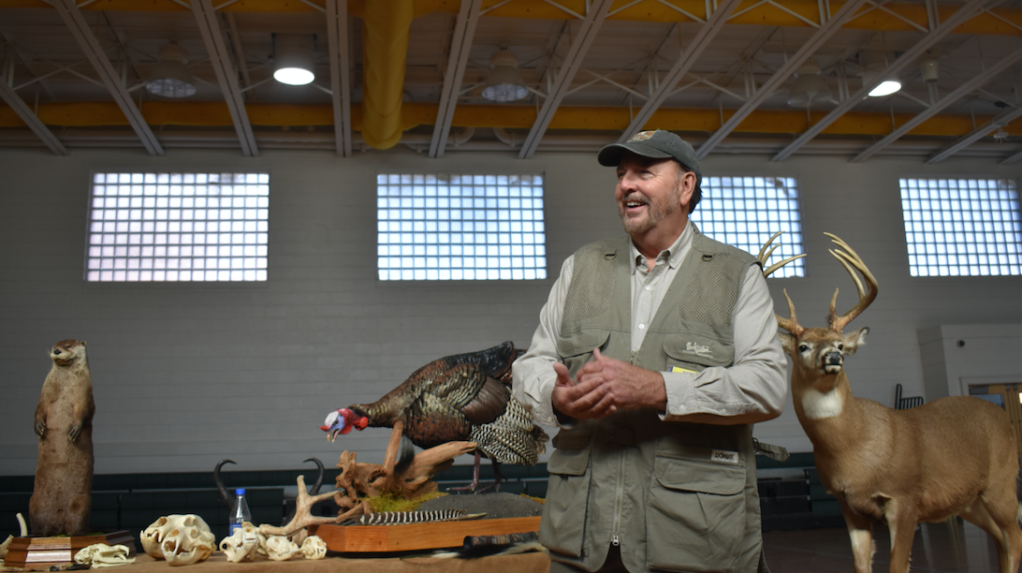Learning to love wildlife
Published 8:54 pm Tuesday, January 29, 2019

- Mike Roberts, surrounded by taxidermied wildlife, gives a presentation about conservation to students at Buckingham County Elementary School.
Rows of third-grade students at Buckingham County Elementary School got an up-close view of some of the most prevalent wildlife in society without having to leave the school gym.
Deer, a fox, an owl, even a beaver, lined the area in front of the bleachers.
The animals, which were taxidermied, acted as part of a hourlong presentation by Ward Burton Foundation Educator Mike Roberts Jan. 10.
The wildlife photographer demonstrated to the students how deer are able to run on their toenails, how beavers become waterproof by secretions that they rub on their skin, how the asymmetrical placement of an owl’s ears allow it to pinpoint prey and catch it.
Roberts made the third-grade students burst into peals of laughter at the absurd images of a deer writing a love letter to another deer, or the sound that an elk makes, which Roberts produced using an elk call device.
In addition to making them laugh, Roberts also wanted to give the students ideas. He wanted them to go outside, experience the oddities and surprises of the natural world.
“Go outside,” Roberts said. “Understand what a great place it is to visit: the great outdoors. It’s great! … It’s so important in your lifetime. It’ll be important in your education. It’ll be important for your survival.”
Roberts and the Halifax-based foundation founded by NASCAR driver Ward Burton, seek to educate young people about wildlife conservation.
He said the environment has been changing, and he said resources on the earth are limited. He encouraged students, as they become adults, to seek ways to protect the earth and its inhabitants.
“In your lifetime, you will have to come to grips with the fact that our resources are limited,” Roberts said. “And the only way you’ll be able to come to grips with that is loving the environment. How do you love it? Through exposure … The only way you will ever love it is to learn about it. The only way to ever learn about it is spend time outdoors.”
He spoke about right to bear arms, and said gun use and ownership is taxed for wildlife conservation. The taxation comes from the federal Pittman-Robertson Act, passed in 1937. He told students who saw guns to not touch them, but to let parents or a trusted adult intervene.
He spoke about the rich environmental resources in North America thousands of years ago. The abundance of deer, elk, and animal populations of all kinds.
When Europeans colonized the nation, Roberts said hunting to live, then hunting for profit, scarred natural resources. This reduced the bison population from approximately 6 million to fewer than 25, Roberts said.
Twentieth-century leaders, such as Theodore Roosevelt, approved legislation to conserve the environment.
The students asked engaged and thought provoking questions about animals in the presentation, including why deer run on their toenails, whether dogs can catch deer, why wolves howl at night.
One student asked if Roberts killed the animals that were displayed.
Roberts said a lot of the animals were killed by vehicles or other means.
He said he had a federal permit in order to locate the animals and have them taxidermied.
Roberts said deer walk on their toenails because they are part of a group of mammals called ungulates, which allow them to walk or run on the tips or their toes.
He said deer run 35 miles per hour, faster than dogs, which often prevent dogs from catching deer. He said wolves howl at night in order to communicate with other wolves.
Roberts and the foundation will share his presentation with schools all-around Region 8, including Prince Edward County Public Schools in February and Cumberland County Public Schools in April.





